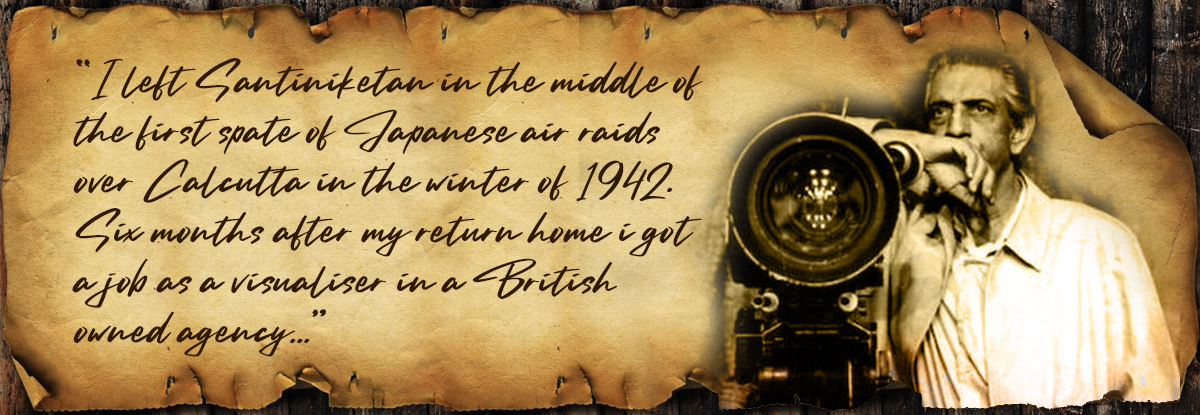SATYAJIT RAY
“I LEFT SANTINIKETAN IN THE MIDDLE OF THE FIRST SPATE OF JAPANESE AIR RAIDS OVER CALCUTTA IN THE WINTER OF 1942. SIX MONTHS AFTER MY RETURN HOME I GOT A JOB AS A VISUALISER IN A BRITISH OWNED AGENCY…”
After college and graduation, I went to Santiniketan for a course in Fine Arts. I had vague plans for a career in graphic arts. I had a flair for drawing but needed a foundation
of discipline to be able to make any use of it. With me went my small but precious collection of gramophone records of classical western music. I needed my second love because, in leaving the city, I was leaving my first love – films – behind.
As it turned out, the only cinema in the vicinity of the campus was two miles away, had wooden benches for seats, and showed mythological films. This put me in the doldrums until I discovered in the shelves of the arts department library three books on cinema. They were Rothaʼs Film Till Now, and two books of theory by Arnheim and Spottiswoode.
I left Santiniketan in the middle of the first spate of Japanese air raids over Calcutta in the winter of 1942. Six months after my return home, I got a job as a visualiser in a British-owned advertising agency.
Calcutta now being a base in the operations in the war, Chowringhee was chock-a-block with GIs. The pavement book stalls displayed wafer-thin editions of LIFE and TIME, and the jam-packed cinemas showed the very latest films from Hollywood. While I sat at my office desk sketching out campaigns for tea and biscuits, my mind buzzed with the thoughts of the films I had been seeing.
I never ceased to regret that while I had stood in the scorching summer sun in the wilds of Santiniketan sketching simul and palash in full bloom, Citizen Kane had come and gone, playing for just three days in the newest and biggest cinema in Calcutta.
Excerpts from ʻOur Films, Their Filmsʼ by Satyajit Ray

